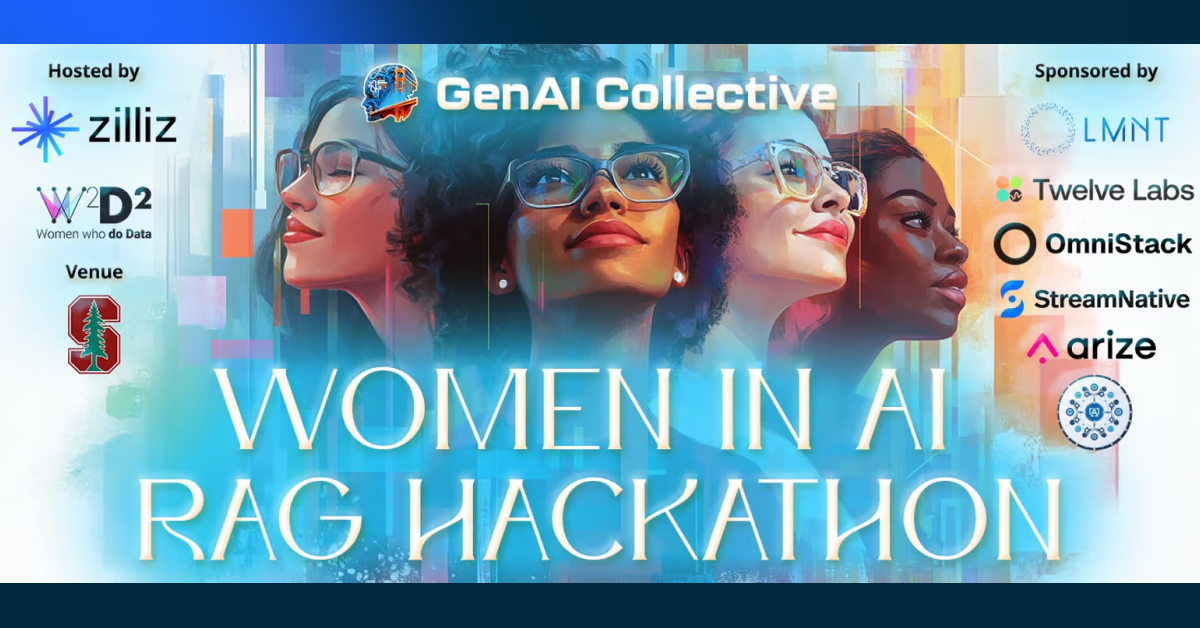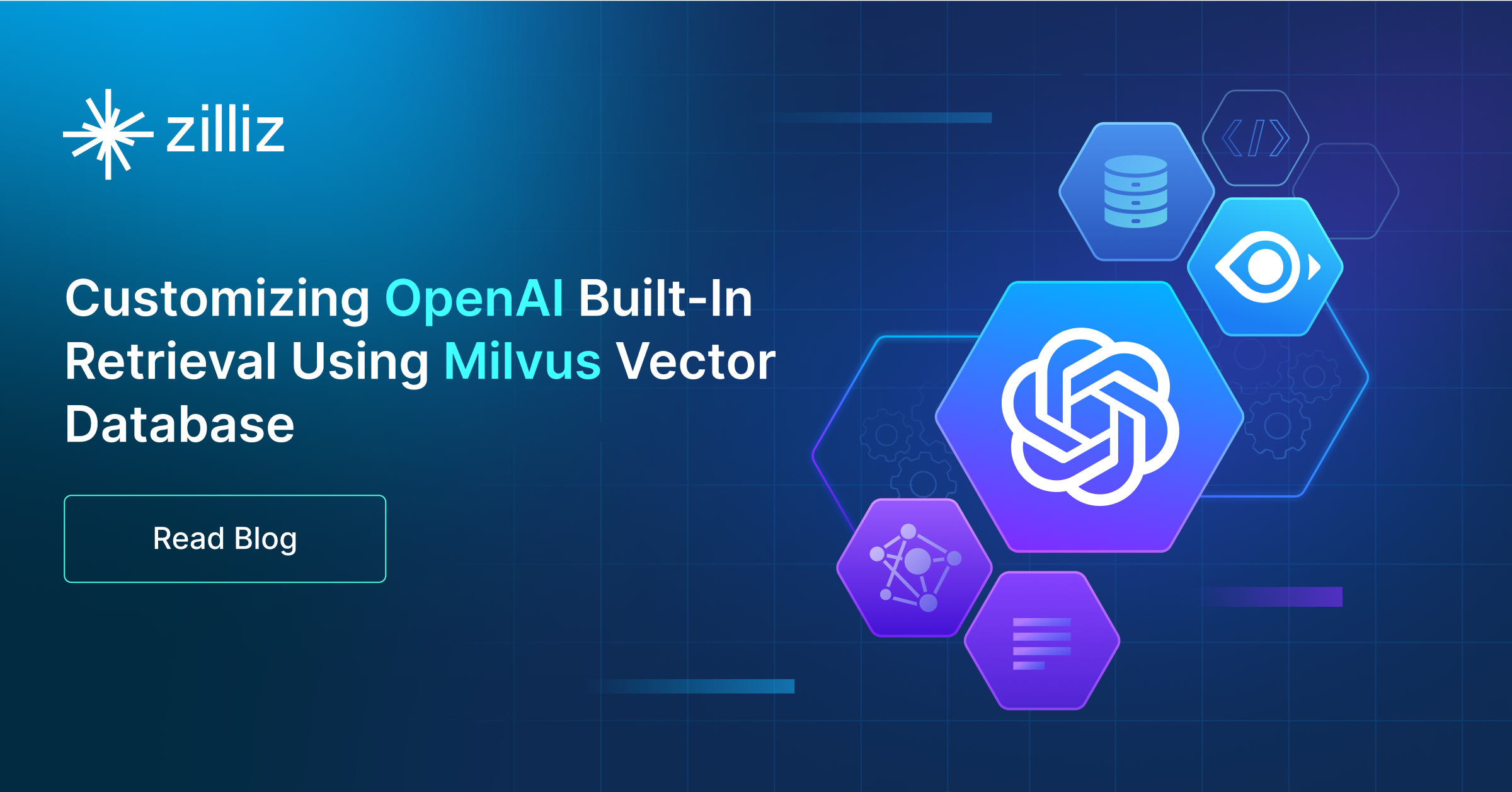Build RAG Chatbot with LangChain, Zilliz Cloud, Fireworks AI DeepSeek V3, and Ollama paraphrase-multilingual
Introduction to RAG
Retrieval-Augmented Generation (RAG) is a game-changer for GenAI applications, especially in conversational AI. It combines the power of pre-trained large language models (LLMs) like OpenAI’s GPT with external knowledge sources stored in vector databases such as Milvus and Zilliz Cloud, allowing for more accurate, contextually relevant, and up-to-date response generation. A RAG pipeline usually consists of four basic components: a vector database, an embedding model, an LLM, and a framework.
Key Components We'll Use for This RAG Chatbot
This tutorial shows you how to build a simple RAG chatbot in Python using the following components:
- LangChain: An open-source framework that helps you orchestrate the interaction between LLMs, vector stores, embedding models, etc, making it easier to integrate a RAG pipeline.
- Zilliz Cloud: a fully managed vector database-as-a-service platform built on top of the open-source Milvus, designed to handle high-performance vector data processing at scale. It enables organizations to efficiently store, search, and analyze large volumes of unstructured data, such as text, images, or audio, by leveraging advanced vector search technology. It offers a free tier supporting up to 1 million vectors.
- Fireworks AI DeepSeek V3: This advanced AI model specializes in deep data exploration and analysis, providing powerful insights through its robust analytical capabilities. With strengths in pattern recognition and predictive analytics, it is ideal for sectors like finance and healthcare, where uncovering hidden trends and making data-driven decisions are crucial.
- Ollama Paraphrase-Multilingual: This AI model specializes in generating paraphrases across multiple languages, enhancing content diversity and accessibility. Its strength lies in understanding context while altering sentence structure, making it ideal for translation services, content creation, and multilingual learning applications.
By the end of this tutorial, you’ll have a functional chatbot capable of answering questions based on a custom knowledge base.
Note: Since we may use proprietary models in our tutorials, make sure you have the required API key beforehand.
Step 1: Install and Set Up LangChain
%pip install --quiet --upgrade langchain-text-splitters langchain-community langgraph
Step 2: Install and Set Up Fireworks AI DeepSeek V3
pip install -qU "langchain[fireworks]"
import getpass
import os
if not os.environ.get("FIREWORKS_API_KEY"):
os.environ["FIREWORKS_API_KEY"] = getpass.getpass("Enter API key for Fireworks AI: ")
from langchain.chat_models import init_chat_model
llm = init_chat_model("accounts/fireworks/models/deepseek-v3", model_provider="fireworks")
Step 3: Install and Set Up Ollama paraphrase-multilingual
pip install -qU langchain-ollama
from langchain_ollama import OllamaEmbeddings
embeddings = OllamaEmbeddings(model="paraphrase-multilingual")
Step 4: Install and Set Up Zilliz Cloud
pip install -qU langchain-milvus
from langchain_milvus import Zilliz
vector_store = Zilliz(
embedding_function=embeddings,
connection_args={
"uri": ZILLIZ_CLOUD_URI,
"token": ZILLIZ_CLOUD_TOKEN,
},
)
Step 5: Build a RAG Chatbot
Now that you’ve set up all components, let’s start to build a simple chatbot. We’ll use the Milvus introduction doc as a private knowledge base. You can replace it with your own dataset to customize your RAG chatbot.
import bs4
from langchain import hub
from langchain_community.document_loaders import WebBaseLoader
from langchain_core.documents import Document
from langchain_text_splitters import RecursiveCharacterTextSplitter
from langgraph.graph import START, StateGraph
from typing_extensions import List, TypedDict
# Load and chunk contents of the blog
loader = WebBaseLoader(
web_paths=("https://milvus.io/docs/overview.md",),
bs_kwargs=dict(
parse_only=bs4.SoupStrainer(
class_=("doc-style doc-post-content")
)
),
)
docs = loader.load()
text_splitter = RecursiveCharacterTextSplitter(chunk_size=1000, chunk_overlap=200)
all_splits = text_splitter.split_documents(docs)
# Index chunks
_ = vector_store.add_documents(documents=all_splits)
# Define prompt for question-answering
prompt = hub.pull("rlm/rag-prompt")
# Define state for application
class State(TypedDict):
question: str
context: List[Document]
answer: str
# Define application steps
def retrieve(state: State):
retrieved_docs = vector_store.similarity_search(state["question"])
return {"context": retrieved_docs}
def generate(state: State):
docs_content = "\n\n".join(doc.page_content for doc in state["context"])
messages = prompt.invoke({"question": state["question"], "context": docs_content})
response = llm.invoke(messages)
return {"answer": response.content}
# Compile application and test
graph_builder = StateGraph(State).add_sequence([retrieve, generate])
graph_builder.add_edge(START, "retrieve")
graph = graph_builder.compile()
Test the Chatbot
Yeah! You've built your own chatbot. Let's ask the chatbot a question.
response = graph.invoke({"question": "What data types does Milvus support?"})
print(response["answer"])
Example Output
Milvus supports various data types including sparse vectors, binary vectors, JSON, and arrays. Additionally, it handles common numerical and character types, making it versatile for different data modeling needs. This allows users to manage unstructured or multi-modal data efficiently.
Optimization Tips
As you build your RAG system, optimization is key to ensuring peak performance and efficiency. While setting up the components is an essential first step, fine-tuning each one will help you create a solution that works even better and scales seamlessly. In this section, we’ll share some practical tips for optimizing all these components, giving you the edge to build smarter, faster, and more responsive RAG applications.
LangChain optimization tips
To optimize LangChain, focus on minimizing redundant operations in your workflow by structuring your chains and agents efficiently. Use caching to avoid repeated computations, speeding up your system, and experiment with modular design to ensure that components like models or databases can be easily swapped out. This will provide both flexibility and efficiency, allowing you to quickly scale your system without unnecessary delays or complications.
Zilliz Cloud optimization tips
Optimizing Zilliz Cloud for a RAG system involves efficient index selection, query tuning, and resource management. Use Hierarchical Navigable Small World (HNSW) indexing for high-speed, approximate nearest neighbor search while balancing recall and efficiency. Fine-tune ef_construction and M parameters based on your dataset size and query workload to optimize search accuracy and latency. Enable dynamic scaling to handle fluctuating workloads efficiently, ensuring smooth performance under varying query loads. Implement data partitioning to improve retrieval speed by grouping related data, reducing unnecessary comparisons. Regularly update and optimize embeddings to keep results relevant, particularly when dealing with evolving datasets. Use hybrid search techniques, such as combining vector and keyword search, to improve response quality. Monitor system metrics in Zilliz Cloud’s dashboard and adjust configurations accordingly to maintain low-latency, high-throughput performance.
Fireworks AI DeepSeek V3 optimization tips
DeepSeek V3 is optimized for advanced reasoning and response quality, making it a powerful choice for RAG applications requiring deep contextual understanding. Improve retrieval by implementing multi-stage ranking, ensuring only the most relevant documents are passed as context. Use structured prompts with clear delineation between retrieved content and user queries. Adjust temperature (0.1–0.2) for accuracy and fine-tune top-k/top-p for response control. Minimize latency with precomputed embeddings and caching for commonly queried data. Take advantage of Fireworks AI’s API optimizations to batch multiple requests, reducing processing overhead. Implement dynamic scaling strategies for high-demand scenarios, ensuring model performance remains consistent under load. If used in a multi-tiered architecture, deploy DeepSeek V3 for high-value queries while leveraging smaller models for basic lookups.
Ollama Paraphrase-Multilingual Optimization Tips
To optimize the Ollama paraphrase-multilingual component in your Retrieval-Augmented Generation (RAG) setup, ensure that your training dataset is diverse and representative of the languages and dialects you intend to support, as this enhances paraphrasing accuracy across contexts. Use transfer learning with domain-specific data to improve performance on niche topics. Adjust hyperparameters such as learning rate and batch size based on validation results to enhance convergence. Implement a caching mechanism for frequently accessed paraphrases to reduce response time during retrieval. Monitor and analyze performance metrics regularly to identify bottlenecks, and consider fine-tuning the model periodically based on user feedback and new datasets to adapt to evolving language use.
By implementing these tips across your components, you'll be able to enhance the performance and functionality of your RAG system, ensuring it’s optimized for both speed and accuracy. Keep testing, iterating, and refining your setup to stay ahead in the ever-evolving world of AI development.
RAG Cost Calculator: A Free Tool to Calculate Your Cost in Seconds
Estimating the cost of a Retrieval-Augmented Generation (RAG) pipeline involves analyzing expenses across vector storage, compute resources, and API usage. Key cost drivers include vector database queries, embedding generation, and LLM inference.
RAG Cost Calculator is a free tool that quickly estimates the cost of building a RAG pipeline, including chunking, embedding, vector storage/search, and LLM generation. It also helps you identify cost-saving opportunities and achieve up to 10x cost reduction on vector databases with the serverless option.
 Calculate your RAG cost
Calculate your RAG cost
What Have You Learned?
By diving into this tutorial, you’ve unlocked the magic of building a RAG system from scratch! You learned how LangChain acts as the glue, seamlessly orchestrating interactions between components. With Zilliz Cloud’s blazing-fast vector database, you saw how to store and retrieve dense embeddings efficiently, scaling to handle massive datasets without breaking a sweat. Then came Fireworks AI’s DeepSeek V3, a powerhouse LLM that transforms retrieved context into human-like answers, blending creativity with precision. And let’s not forget Ollama’s paraphrase-multilingual model—your secret weapon for generating rich, multilingual embeddings that capture the nuance of diverse queries. Together, these tools form a dynamic pipeline: ingest data, encode it into vectors, search for relevance, and generate answers that feel almost telepathic. You’ve seen how each piece fits into the puzzle, from chunking documents to optimizing retrieval with metadata filters, all while keeping costs in check using the tutorial’s free RAG cost calculator (a game-changer for budget-conscious builders!).
But this is just the beginning! You’re now equipped to experiment, tweak, and supercharge your RAG apps. Maybe swap LLMs for different use cases, fine-tune embedding models for domain-specific jargon, or play with Zilliz’s indexing strategies to balance speed and accuracy. Remember those optimization tips? They’re your cheat code for squeezing every drop of performance out of your system. So go ahead—build that multilingual chatbot, that research assistant, that next-gen knowledge hub. The tools are in your hands, and the possibilities are endless. Imagine what you’ll create when you mix this tech with your unique ideas. Ready, set, innovate! The future of intelligent apps is yours to shape. 🚀
Further Resources
🌟 In addition to this RAG tutorial, unleash your full potential with these incredible resources to level up your RAG skills.
- How to Build a Multimodal RAG | Documentation
- How to Enhance the Performance of Your RAG Pipeline
- Graph RAG with Milvus | Documentation
- How to Evaluate RAG Applications - Zilliz Learn
- Generative AI Resource Hub | Zilliz
We'd Love to Hear What You Think!
We’d love to hear your thoughts! 🌟 Leave your questions or comments below or join our vibrant Milvus Discord community to share your experiences, ask questions, or connect with thousands of AI enthusiasts. Your journey matters to us!
If you like this tutorial, show your support by giving our Milvus GitHub repo a star ⭐—it means the world to us and inspires us to keep creating! 💖
- Introduction to RAG
- Key Components We'll Use for This RAG Chatbot
- Step 1: Install and Set Up LangChain
- Step 2: Install and Set Up Fireworks AI DeepSeek V3
- Step 3: Install and Set Up Ollama paraphrase-multilingual
- Step 4: Install and Set Up Zilliz Cloud
- Step 5: Build a RAG Chatbot
- Optimization Tips
- RAG Cost Calculator: A Free Tool to Calculate Your Cost in Seconds
- What Have You Learned?
- Further Resources
- We'd Love to Hear What You Think!
Content
Vector Database at Scale
Zilliz Cloud is a fully-managed vector database built for scale, perfect for your RAG apps.
Try Zilliz Cloud for Free


